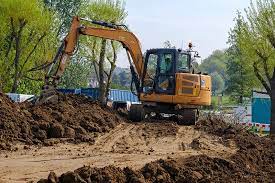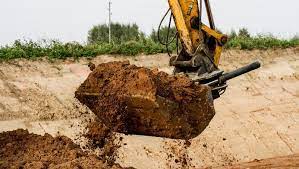Contents
Introduction
Discover the essentials of excavation works in construction methods, equipment, safety, and applications in this comprehensive guide. Excavation is a cornerstone of construction and civil engineering, serving as the groundwork for various infrastructure projects. Understanding its intricacies and best practices is essential for ensuring safety and efficiency on construction sites. In this comprehensive guide, we’ll delve into the methods, equipment, safety considerations, and applications of excavation.
How Excavation Works a Guide
Excavation works by systematically removing earth to create space for various construction activities. This process involves employing specialized equipment such as excavators, backhoes, and bulldozers to dig trenches, excavate foundations, and shape the terrain. Excavation methods, including trenching, bulk excavation, and grading, are selected based on project requirements and site conditions.
Safety is paramount in excavation, with measures such as trench shoring, utility locating, and equipment operation training implemented to prevent accidents. Excavation finds applications in building construction, road development, utility installation, and landscaping, playing a vital role in shaping the built environment.

Understanding the Basics of Excavation
At its core, excavation involves the removal of earth to create space for construction activities. This process can range from small-scale digging for landscaping to large-scale earthmoving for infrastructure development. Excavation methods vary based on project requirements, soil type, and site conditions. Trenching, bulk excavation, and grading are among the common methods used in construction.
Excavation is the process of removing earth to create space for various structures, utilities, or landscaping features. It involves careful planning, proper equipment selection, and adherence to safety protocols to ensure successful outcomes. By grasping the fundamentals of excavation, including different methods, equipment used, and safety considerations, individuals can effectively contribute to projects and mitigate risks associated with this essential construction process.
Equipment Used in Excavation
Excavation equipment comes in various types and sizes, each serving specific purposes on construction sites. Excavators, with their hydraulic arms and buckets, are versatile machines used for precise digging and lifting operations. Backhoes combine the capabilities of a tractor and an excavator, making them suitable for trenching and loading tasks. Bulldozers are ideal for pushing and leveling soil, while trenchers are specialized machines designed for trenching operations.
Safety Considerations in Excavation
Excavation works carries inherent risks, making safety a top priority on construction sites. Trench safety is paramount, with proper shoring, sloping, or trench box systems necessary to prevent collapses. Utility locating is crucial to avoid accidental damage to underground utilities. Proper training and supervision are essential for safe equipment operation, and confined space safety measures must be implemented for work within excavations.
Additionally, working in confined spaces within excavations requires additional safety measures, including adequate ventilation, atmospheric monitoring, and strict entry protocols to prevent accidents and asphyxiation. By prioritizing safety through rigorous protocols and training, stakeholders can mitigate risks and create a safe working environment for everyone involved in excavation projects.
Applications of Excavation
Excavation finds applications across various construction and infrastructure projects. In building construction, excavation is used to create foundations, basements, and underground parking structures.
Road and highway construction rely on excavation for grading, slope stabilization, and creating space for roadways and tunnels. Utility installation requires excavation for laying underground pipes and conduits, while landscaping and site development utilize excavation for shaping terrain and installing landscaping features.
Landscaping and Site Development
Landscaping and site development represent one of the diverse applications of excavation, where the shaping of terrain and installation of various features transform outdoor spaces. Excavation is integral to creating the foundational elements of landscaping projects, such as leveling ground surfaces, excavating for ponds or water features, and installing retaining walls or terraces.
Additionally, excavation facilitates the installation of underground irrigation systems, drainage networks, and utility conduits essential for maintaining the health and functionality of landscaped areas. Whether enhancing residential gardens, commercial properties, or public parks, excavation plays a pivotal role in bringing landscape designs to life, shaping the aesthetic appeal and functionality of outdoor environments for years to come.
Conclusion
Excavation is a foundational process in construction and civil engineering, shaping the landscape and laying the groundwork for development. By understanding the methods, equipment, safety considerations, and applications of excavation, stakeholders can ensure the success and safety of their projects. From small-scale landscaping to large-scale infrastructure development, excavation remains essential for building a sustainable and resilient built environment.



